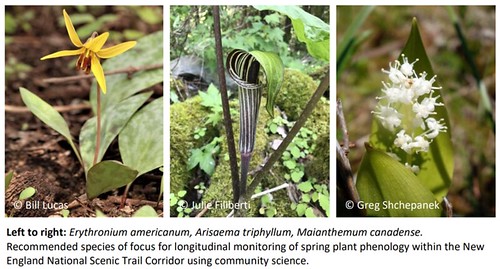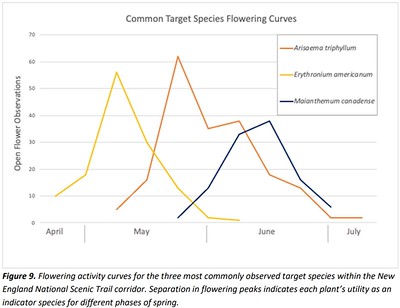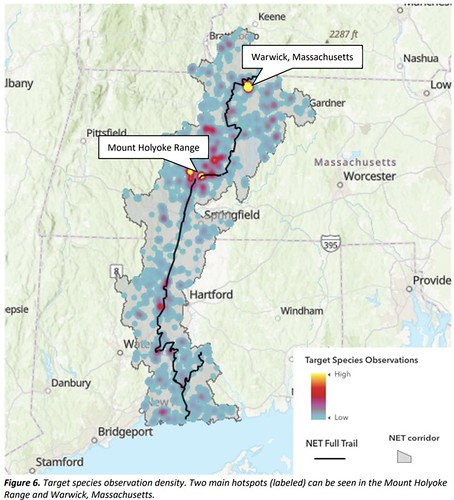Reintroducing NET Nature Watch Project & Taking a closer look at last year's report
Hello iNaturalists!
I wanted to take a moment to quickly reintroduce this ongoing project and to highlight Grace’s 2022 report.
Taken from the NET website: https://newenglandtrail.org/new-england-nature-watch/
“Since 2004, NET’s Massachusetts partner, Appalachian Mountain Club (AMC) has been monitoring the timing of seasonal plant events like flowering in conjunction with weather conditions to better understand the effects of climate change. To gather a wide range and make sense of this data, AMC and NET launched their New England Nature Watch program using the iNaturalist app in 2021. With the help of curious hikers turned citizen scientists (that’s you!), we’re looking to continue the data collection for another year.”
The role you all have played has been crucial for developing a robust dataset that NPS and AMC can use to further understand how climate change is impacting our region. The NET is a trail made more special because of the direct role you all play in its stewardship. In that light, I felt it important to share with you some highlights of the 2022 report written by previous intern, Grace Piselli. This report would not have been possible without your time and effort on the trail!!
Key findings from Grace’s NET report
With your hard work, we now have three indicator species that can be used as a baseline for future climate analysis. They are Erythronium Americanum (yellow trout lily) as an early spring indicator, Arisaema triphyllum (jack-in-the-pulpit) as a mid-spring indicator, and Maianthemum canadense (Canada mayflower) as a late spring indicator. Their flowering curves will be used to aid in monitoring ongoing shifts in climate. Not only have we found plant species we can home in on, we also have three important temporal baselines to work from now!
Your data helped facilitate the discovery of temporal and spatial variations of flowering along the trail corridor. The Northern portion of the NET is essentially the Massachusetts portion and the Southern portion of the NET is the Connecticut portion of the trail. Check out those differences in mean flowering dates!
Lastly, I wanted to highlight a graphic that visualizes your efforts along the entire trail corridor. I am impressed by the space you all covered and can’t wait to see what your (ongoing) 2023 observations help reveal.
All the best,
Luis Berrizbeitia












